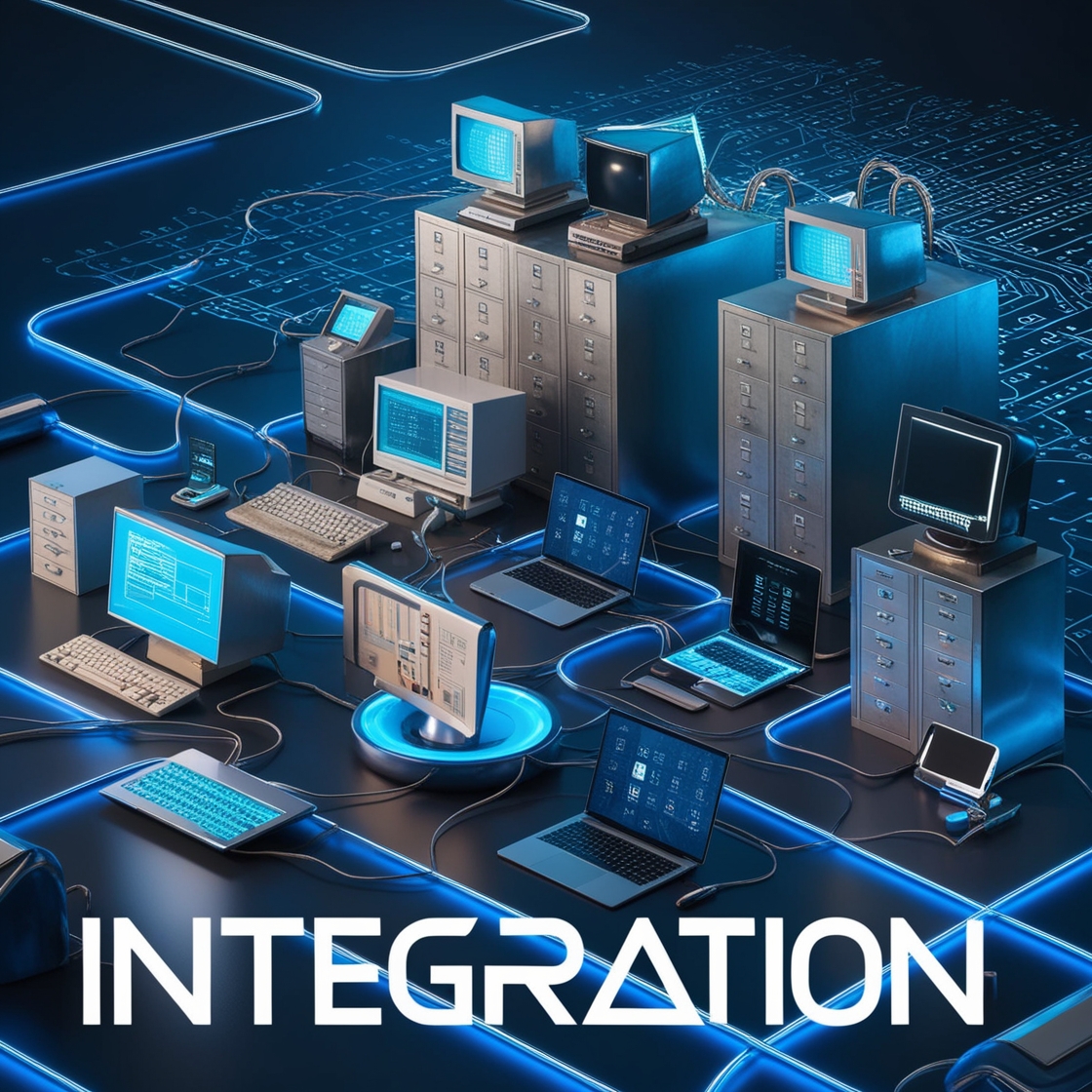Introduction
In today’s fast-paced digital landscape, businesses are under constant pressure to evolve and innovate. One major hurdle many organizations face is integrating legacy systems with modern software solutions. These legacy systems, while still functional, can hinder growth and efficiency if not properly integrated. In this article, we’ll explore the challenges, strategies, and benefits of integrating legacy systems with cutting-edge technologies.
Understanding Legacy Systems
Definition and Characteristics
Legacy systems refer to outdated computer systems or applications that are still in use. They often lack modern functionality and may not be compatible with new technologies. Characteristics of legacy systems include outdated programming languages, limited support, and inflexibility.
Common Legacy Systems in Businesses
Many businesses still rely on legacy systems like mainframes, older databases, and even custom-built applications. These systems, although reliable, can pose significant challenges when it comes to integration with modern solutions.
The Need for Modern Software Solutions
Limitations of Legacy Systems
Legacy systems can be costly to maintain and often lack the features needed to support modern business processes. They may not support mobile access, real-time data processing, or integration with other digital tools.
Benefits of Modern Software
Modern software solutions offer enhanced functionality, scalability, and ease of integration. They can help organizations improve efficiency, reduce costs, and provide better customer experiences.
Challenges of Integrating Legacy Systems
Technical Obstacles
Integrating legacy systems with modern software can present technical challenges such as data incompatibility, outdated technology stacks, and complex coding.
Cultural Resistance Within Organizations
Often, employees may resist changes due to fear of the unknown or lack of understanding of new technologies. It’s crucial to address these concerns to ensure smooth integration.
Strategies for Successful Integration
Assessing Current Systems
Before diving into integration, assess your existing legacy systems to understand their strengths and weaknesses. This will help in determining the best approach for integration.
Choosing the Right Integration Approach
There are several integration methods available, and choosing the right one is critical. Consider factors like your business goals, budget, and existing infrastructure.
Integration Approaches
API-Based Integration
Using APIs (Application Programming Interfaces) allows for seamless communication between legacy systems and modern applications. This method is flexible and can facilitate real-time data exchange.
Middleware Solutions
Middleware acts as a bridge between different applications, allowing them to communicate without modifying the existing systems. This approach is useful when dealing with multiple legacy systems.
Re-Engineering Legacy Systems
In some cases, it may be beneficial to re-engineer or update legacy systems to meet current standards. While this can be costly and time-consuming, it can also yield significant long-term benefits.
Step-by-Step Guide to Integration
Step 1: Define Goals and Requirements
Clearly outline what you want to achieve through integration. Identify specific pain points and set measurable goals.
Step 2: Analyze Existing Legacy Systems
Conduct a thorough analysis of your current systems to understand what data and processes need to be integrated.
Step 3: Select Integration Tools
Choose the right tools and technologies that align with your integration strategy. Consider factors like compatibility, scalability, and user-friendliness.
Step 4: Develop a Roadmap
Create a detailed roadmap that outlines the steps and timelines for the integration process. This will help keep the project on track.
Case Studies of Successful Integration
Example 1: Retail Industry
A major retail chain successfully integrated its legacy inventory management system with a modern e-commerce platform. This allowed for real-time inventory updates and improved customer experience.
Example 2: Healthcare Sector
A healthcare provider integrated its legacy patient management system with a modern electronic health record (EHR) system. This integration improved patient care and streamlined administrative processes.
Measuring the Success of Integration
Key Performance Indicators (KPIs)
Identify KPIs to measure the success of your integration efforts. These could include improved efficiency, reduced costs, and enhanced customer satisfaction.
Continuous Monitoring and Feedback
Integration is not a one-time process. Continuously monitor performance and gather feedback to make necessary adjustments.
Future Trends in System Integration
Rise of Cloud-Based Solutions
As more businesses move to the cloud, integrating legacy systems with cloud-based solutions will become increasingly important.
Importance of Data Analytics
Leveraging data analytics will help organizations gain insights from both legacy and modern systems, leading to better decision-making.
Conclusion
Integrating legacy systems with modern software solutions is no small feat, but it’s essential for businesses looking to thrive in the digital age. By understanding the challenges and employing effective strategies, organizations can unlock the full potential of their technology stack. Embrace the change and take that leap towards integration—it could be the key to your business’s success!
FAQs
What are legacy systems?
Legacy systems are outdated technologies still in use that may hinder modern operations.
Why is integration important?
Integration enhances efficiency, reduces costs, and improves customer experiences.
What are the risks of not integrating?
Failure to integrate can lead to inefficiencies, increased operational costs, and poor customer satisfaction.
How long does integration take?
The timeline varies based on the complexity of the systems involved and the chosen integration approach.
Can all legacy systems be integrated?
While many can be integrated, some may require significant upgrades or replacements.
